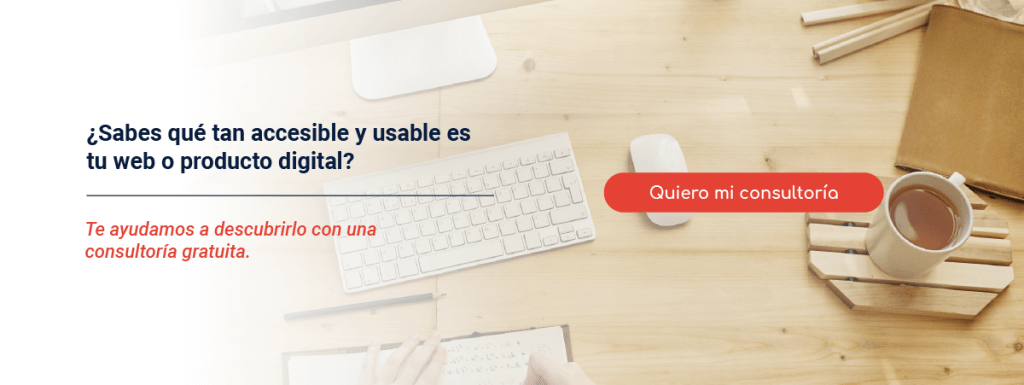How to optimize the user experience to increase your website traffic

The web user experience greatly determines the traffic, loyalty and satisfaction of each visitor. It is, therefore, a decisive factor in today’s digital marketing .
INDEX
Defining the web user experience
The pillars of usability
How to improve the user experience on our website
Defining the web user experience
User experience (UX) refers to how a person feels when interacting with a digital product or service. How do we get a good user experience? When we focus on designing useful, usable and desirable products. This way we will make the user feel satisfied, happy and delighted and does not want to leave the website.
This user experience determines a large portion of conversions. Consequently, it is decisive for productivity and customer retention.
Similarly, the quality of this experience is one of Google’s criteria when determining its search positions. Why do we care so much? Because our SEO or natural positioning depends on it. And, also, to what extent we are accessible and known by potential customers.
The point is clear: Google wants to provide its users with content of the highest quality and appropriateness. What happens when you verify that the website provided does so and allows them to find what they are after or looking for? Repeat this recommendation again and again to respond to their demands.
The pillars of usability
In practice, web usability encompasses the UX of a site. That is, the ease with which visitors read, navigate and interrelate with the site or application in question.
It depends, fundamentally, on three major issues:
Ease of use
It consists of the effectiveness of the site to provide the product, service or content sought. Two aspects favor it: the reduction of the steps that must be taken and how intuitive the path is.
Ease of learning
It is the ability to interact seamlessly with all the features of the site. As users, we soon become familiar with the criteria that govern the web, so we start a progressive self-learning that makes us, each time, more autonomous and competent.
Flexibility
It is the versatility of the site, its ability to adapt to the expectations, uses and characteristics of each type of user.

How to improve the user experience on our website
We have already seen the great importance of this concept today. Therefore, we consider it essential to be clear about which specific aspects determine and condition your level of satisfaction.
Next, we will assess what resources are available to optimize this fundamental section anywhere.
Structure and navigation
Immediacy is a rising value, indispensable for today’s people. Everything is instant on the Internet, and our site should provide them with the speed they want.
Thus, we must offer the fastest, most direct and comfortable way to travel all the pages and the contents of the page. The objective is key: to ensure that they will be able to do it in the shortest possible time and without effort.
The goal, obviously, is conversion. The itinerary must be checked to ensure its effectiveness. It must be a visual process, intuitive, fast, controlled and motivated at all times.
Common mistakes to avoid include:
- Hide menu bars.
- Include acronyms or confusing terms in menus.
- Incorporate endless menus and submenus.
- Lack of an effective search engine that leads in one click to the desired place.
The home page, likewise, must be the catapult towards this journey as complete as satisfactory and fast.
Design
It is essential to achieve a synergistic binomial: visual attractiveness and functional efficiency. It is necessary to ensure that the user can develop freely, without problems or the need for prior learning. The user experience is central to design.
What are the resources that guide our recipients in the right direction? Highlight the main thing, create levels of attention and interest, prioritize the visual and promote a homogeneous and coherent approach.
All this, in addition, must be seasoned with another inalienable attribute: maximum security.

Legibility
The visual factor is important, but a good part of the web content is still displayed in words. Among other things because not only users, but also Google’s search algorithms, need this type of messages.
In general, people who enter a website do not usually read more than 28% of its content. That is, we have to make sure that what they read is what is truly substantial.
The creation of controlled reading levels is essential, and we can reinforce it thanks to this type of resources:
- Colour. Contrasts are an infallible resource, as long as we do not abuse them.
- Typography. Simple letters are the easiest to read. Then they are read faster and, therefore, they are the ones that interest us. Also, it is preferable not to combine several of them in the same design so as not to confuse or dizzy users.
- Format. Interspersing titles, highlights, headings, bullets, bold or italics, line spacing and visual interparagraphs allows you to create a powerful layout and take advantage of it to enhance the main messages.
Loading speed
Let’s not fool ourselves: nobody waits more than three or four seconds in the online universe. Fast sites are much more satisfying and visited than slow ones. If we manage to have a very fast loading website, we will have a very important competitive advantage.
Sometimes, however, the use of visual resources such as striking and audiovisual photos subtracts in this aspect. In any case, you have to optimize the content and get the perfect balance.
Responsive adequacy
What does it consist of? In making your site look and work perfectly on any device from which it is accessed. Many of today’s users use smartphones or tablets to navigate. The level of user experience must always be excellent.
The best examples of web user experience that you can get inspired by include PayPal, Airbnb, Duolingo, and Starbucks. How can we have similar websites?
At Pasiona we have been turning all that into reality for many years. Contact us!

usability, userexperience, WebDesign
Go back


